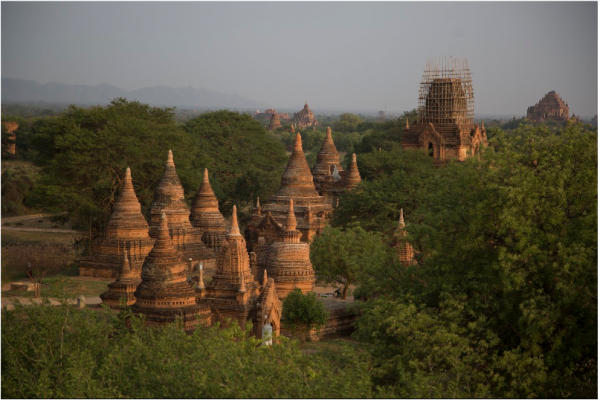Google Creates VR Models to Help Preserve World Heritage Sites
One of the tragic highlights of ISIS’ rampage across the Middle East was its destruction of ancient buildings and artefacts, human heritage that had been preserved for thousands of years. Just over a decade earlier, the Taliban had laid siege on the ancient Buddhist temples of Bamiyan that had stood for 1500 years and laid them to waste. It is these kinds of risks that motivated some creators to build 3D digital models and digital records of the world’s most treasured historical sites.
An organizations that did so is the non-profit CyArk (a play on Cyber Archive) that has been dedicated towards the digital preservation of cultural sites through the provision of open access data collected through a number of methods such as digital modelling, laser scanning and various other sophisticated technologies.

One of those sophisticated technologies is now virtual reality thanks to the company’s partnership with Google through Google Arts and Culture. The collaboration with Google Arts and Culture will enable users to view some of the world’s most historically significant archaeological sites in virtual reality. Dubbed Open Heritage Project, the project takes users on a virtual reality tour through 26 world heritage sites that are located in some 18 countries. The virtual reality tour comes complete with data about each of the locations, 3D structural models as well as a laser scanning technology.
CyArk has been collecting this data for more than 15 years but the partnership with Google in Open Heritage take this experience to the realms of virtual reality to anyone that has an Android or an iOS phone. Any user with a virtual reality headset will be able to get a 360-degree view of these heritage locations captured in high resolution.
It is an impressive depth of experience, giving users immersive virtual reality tours along with the possibility to overlay rich sets of contextual information that help you learn more about the site you are exploring.
Open Heritage includes a vast array of sites to be explored that span the spectrum of human history. They range from the ancient historical sites of antiquity to the more modern sites built in the late 20th century such as the Lincoln Memorial.
The Open Heritage Project leverages CyArk’s laser-scanning technology so as to capture all the relevant features in a historical site that are required in order to re-simulate the site in virtual reality. The virtual rendering can then be explored via a host of virtual reality media including on mobile phones and computers by wearing virtual reality headsets.
Advanced imaging technology enables the Google Arts and Culture and CyArk to capture the minutest of details about important historical sites including the colour and the fine texture of the monuments. The detailed image scans not only help in re-creating the features in virtual reality but they can also serve a restoration role: they help in identifying damaged areas in the monuments which assist in restoration work.
The Open Heritage Project will also be releasing the source data of its digital models that can be used in the future to analyse them or build applications with the aim of restoring or preserving the real-life monuments captured in the VR. The models produced by the Open Heritage Project will be available in various portals including in the Google Arts and Culture iOS and Android apps. The apps will also lend themselves to virtual reality tours via the Google Daydream platform.
https://virtualrealitytimes.com/2018/04/28/google-creates-vr-models-to-help-preserve-world-heritage-sites/https://virtualrealitytimes.com/wp-content/uploads/2018/04/Preserving-Historical-Sites-in-3D-Models-through-the-Open-Heritage-Project-600x400.pnghttps://virtualrealitytimes.com/wp-content/uploads/2018/04/Preserving-Historical-Sites-in-3D-Models-through-the-Open-Heritage-Project-150x90.pngVirtual TravelOne of the tragic highlights of ISIS’ rampage across the Middle East was its destruction of ancient buildings and artefacts, human heritage that had been preserved for thousands of years. Just over a decade earlier, the Taliban had laid siege on the ancient Buddhist temples of Bamiyan that had...Sam OchanjiSam Ochanji[email protected]EditorVirtual Reality Times - Metaverse & VR
